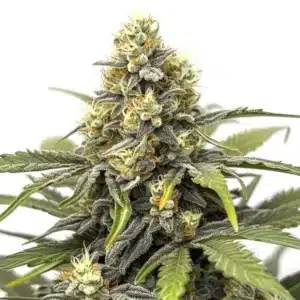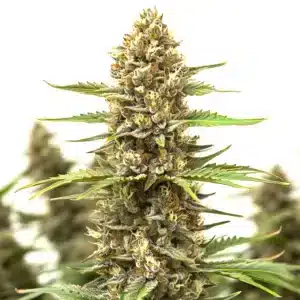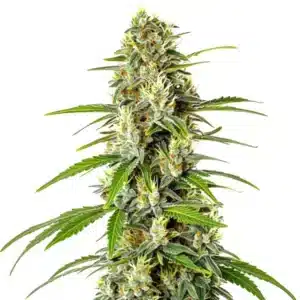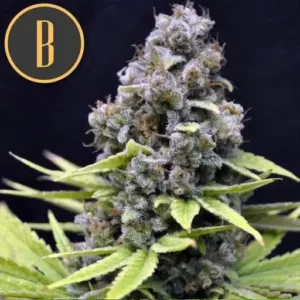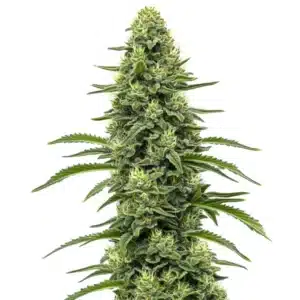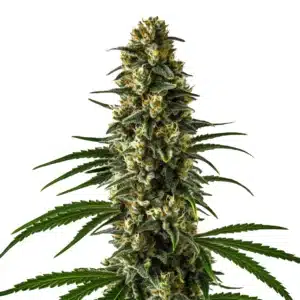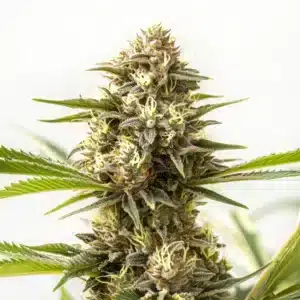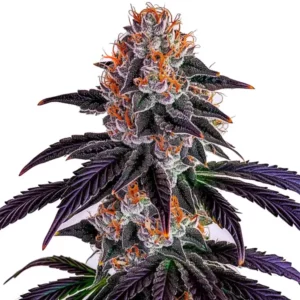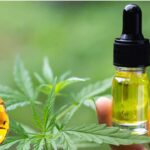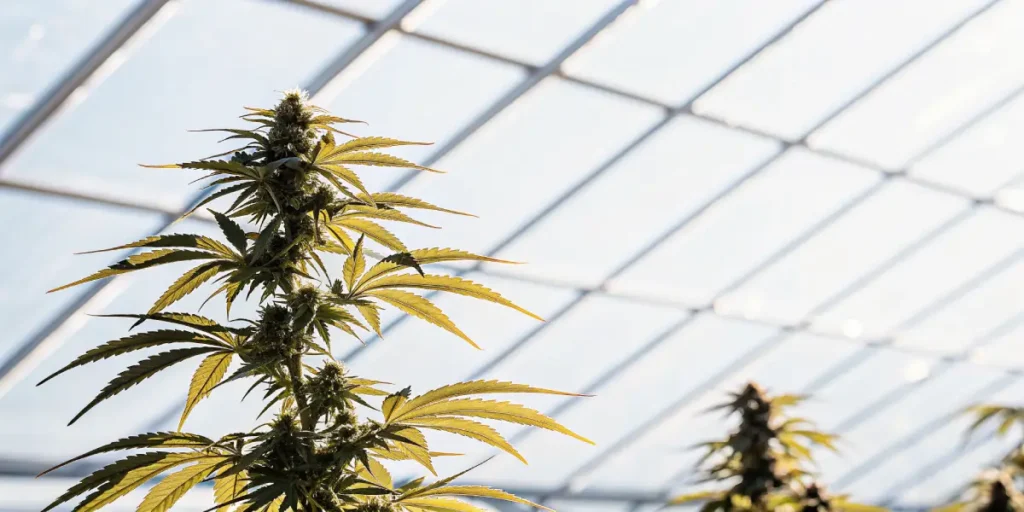
Cannabis Internodes and Growth Patterns
In the world of cannabis cultivation, internodes and growth patterns play a crucial role. Internodes are the spaces between the nodes on a plant’s stem. These nodes are where leaves, branches, and flowers grow. Knowing the cannabis internodes and growth patterns can help optimize your plant’s health and yield.
Many factors influence cannabis internode spacing effects. Light, nutrients, and genetics all play a part. For instance, plants grown under strong light tend to have shorter internodal lengths. This can lead to bushier plants, which is often desirable. On the other hand, plants with more space between internodes may stretch taller.
Recommended Strains
Marijuana plant growth node patterns can vary significantly. Some strains naturally develop more compact growth, while others stretch. Adjusting light distance and nutrient balance can help control these patterns. Choosing the right strain, such as those from Blimburn Seeds, can also make a big difference.
Cannabis Node Development Stages
The cannabis life cycle includes several stages. Knowing these can guide your cultivation practices. Seedlings start with cotyledons, or embryonic leaves. As the plant grows, true leaves form. These are the first signs of the cannabis node development stages.
During the vegetative stage, the plant focuses on growing leaves and stems. This is where internodal length in cannabis cultivation becomes important. Shorter internodal lengths are often preferred in this stage to encourage bushier growth. Adjusting light intensity and spectrum can aid this process.
As the plant transitions into the flowering stage, the cannabis node development stages become even more critical. Nodes become potential sites for flower formation, impacting the eventual yield. Proper management during this stage can significantly enhance the quality and quantity of the harvest.
Each stage of node development is influenced by environmental factors. Temperature, humidity, and air circulation all contribute to how effectively a plant progresses through its lifecycle. Paying close attention to these factors ensures that cannabis internodes and growth patterns are optimized for the best results.
Factors Affecting Internodal Length
Several factors affect internodal length. Light intensity is a primary factor. Stronger light tends to shorten the internodes. Conversely, weak light can cause stretching. Adjusting the light height can influence the growth pattern.
Nutrient levels also play a significant role. A balanced nutrient profile helps maintain healthy growth. Excess nitrogen can cause internodes to stretch. Regular monitoring and adjustments ensure optimal development.
Temperature and humidity are additional elements that impact cannabis internode spacing effects. High temperatures can lead to elongated internodes, while optimal humidity levels promote healthy growth. Striking the right balance can help control internodal length in cannabis cultivation.
Soil quality and pH levels further affect internodal spacing. Keeping the soil well-drained and maintaining a balanced pH can prevent nutrient lockout, ensuring that the plant receives adequate nourishment. This supports robust node development and overall plant vitality.
Promos & Deals
Optimizing Cannabis Growth Patterns
Optimizing cannabis growth pattern involves a mix of environmental control and strain selection. Proper light management is crucial. Using LED lights with adjustable spectrums can help control growth. This ensures the plant receives the right light at each stage.
Pruning and training techniques also aid optimization. Techniques like topping and low-stress training (LST) encourage bushier growth. These methods alter the plant’s natural growth patterns, leading to more bud sites.
Besides to light and training, monitoring and adjusting nutrient schedules is vital for cannabis growth pattern optimization. Providing the right nutrients at each stage ensures the plant has the resources needed for healthy development. Balanced nutrition supports strong node formation and optimal internodal spacing.
Environmental consistency is another key factor. Maintaining stable temperature and humidity levels reduces stress on the plant, promoting steady growth. Consistent conditions allow the plant to focus on developing strong, healthy internodes, ultimately leading to more productive growth patterns.
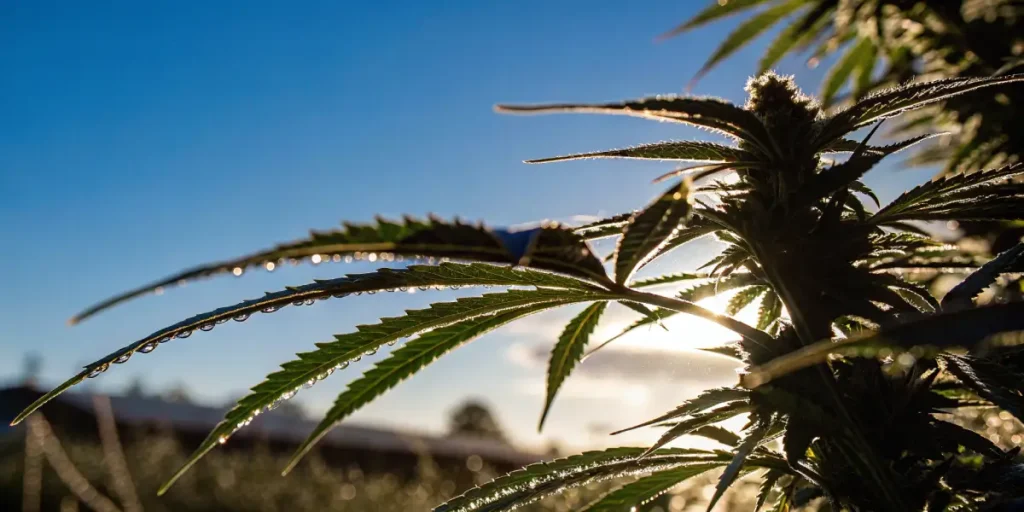
Choosing the Right Strain
Strain selection is critical for optimizing growth patterns. Some strains are naturally more compact, while others are taller. Choosing a strain that matches your growing conditions can simplify the process. Strains like Gorilla Glue 4 from Blimburn Seeds offer robust growth with manageable internode spacing.
Consider the climate and space available. Indoors, compact strains may be preferable. Outdoors, taller strains can take advantage of natural sunlight. Each strain has unique growth characteristics that can be harnessed.
Researching strain-specific characteristics can further aid in selecting the ideal variety for your environment. Understanding the typical cannabis internodes and growth patterns of a strain will help align your cultivation practices with its natural tendencies. This ensures better growth management and yield outcomes.
Local regulations and market demand can also influence strain selection. By choosing strains that are well-suited to your area and meet consumer preferences, you can enhance both the efficiency and profitability of your cannabis cultivation efforts.
Practical Tips for Growers
Practical tips can enhance your growing experience. Regular monitoring is essential. Keep an eye on internodal spacing and adjust environmental factors as needed. This proactive approach helps maintain optimal growth.
Feeding schedules should be adjusted based on growth stages. During the vegetative stage, focus on nitrogen-rich nutrients. In the flowering stage, shift to phosphorus and potassium. This supports healthy node development and flower production.
Documenting your cultivation practices and results can provide valuable insights. Recording details such as light adjustments, nutrient changes, and growth observations helps refine your methods over time. This data-driven approach enhances understanding of cannabis internodes and growth patterns.
Networking with other growers can also provide practical benefits. Sharing tips and experiences with a community of cultivators can lead to new strategies and solutions. Collaborative learning enhances your ability to address challenges and optimize your growing environment.
Training Techniques
Training techniques like topping and LST are effective. Topping involves cutting the main stem to encourage side growth. This results in more even light distribution and increases bud sites. It’s a popular method for controlling cannabis growth patterns.
LST involves gently bending stems to shape the plant. This technique increases light exposure and airflow, promoting healthier growth. It’s a less invasive method compared to topping, suitable for more delicate strains.
Combining different training techniques can provide comprehensive benefits. By integrating methods like super cropping with topping and LST, growers can achieve a tailored approach to cannabis growth pattern optimization. This multifaceted strategy enhances control over plant structure and yield potential.
Timing is crucial when implementing training techniques. Early intervention during the vegetative stage is typically most effective. This allows the plant to recover and adapt, ensuring that cannabis internodes and growth patterns are optimized for the best possible outcomes.
- Regularly check light intensity and distance.
- Monitor nutrient levels and adjust as needed.
- Select strains that match your growing environment.
- Experiment with training techniques for better yields.
- Keep detailed records of growth patterns and outcomes.
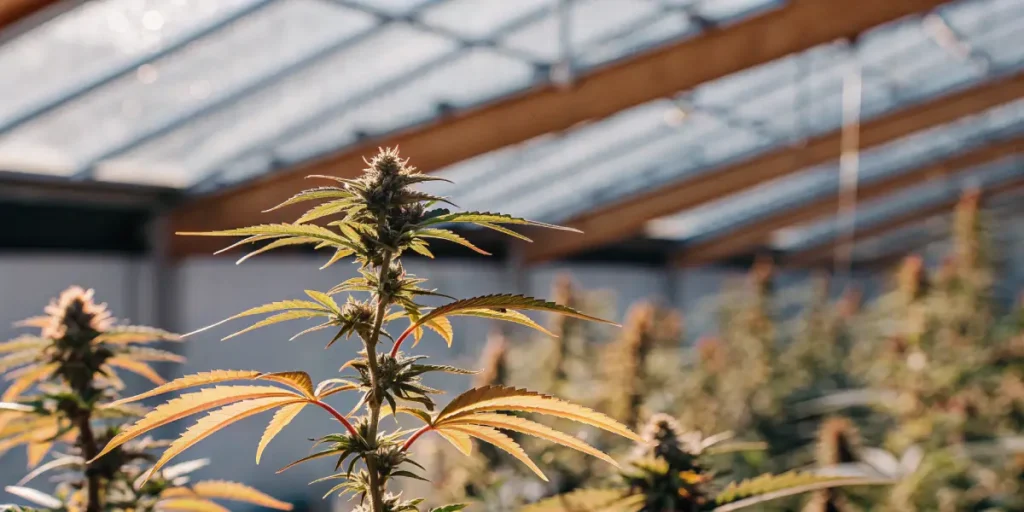
FAQs
How does light affect cannabis internodal spacing?
Light plays a significant role in cannabis internodal spacing effects. High-intensity light tends to reduce internodal length, resulting in bushier plants. This is because the plant doesn’t need to stretch to reach the light source.
Conversely, low-intensity light can cause plants to stretch, increasing internodal spacing. Adjusting light distance and intensity can help control this, optimizing cannabis growth pattern. Regular adjustments ensure plants receive adequate light throughout their growth stages.
Incorporating reflective surfaces can enhance light distribution, minimizing shadows and promoting even growth. This practice can further support optimal internodal length in cannabis cultivation, ensuring each part of the plant receives sufficient light exposure.
Advanced lighting systems with programmable spectrums can tailor light conditions to the plant’s needs at different growth stages. Such systems offer precise control over cannabis internodes and growth patterns, maximizing plant health and yield potential.
What are common cannabis node development stages?
Cannabis node development stages begin with the seedling phase, where the first true leaves form. These are followed by the vegetative stage, focusing on leaf and stem growth, crucial for building plant structure.
During the flowering stage, nodes become sites for bud development. This stage is critical for yield. Proper care and nutrient management during these stages ensure healthy plant development and maximize harvest potential.
Knowing the transition between growth stages is key. Observing changes in marijuana plant growth node patterns can indicate when to adjust environmental conditions and nutrient regimes. This responsiveness supports robust node development and efficient growth transitions.
Advanced growers often use plant training techniques to manipulate node development strategically. Techniques like defoliation during the vegetative stage can improve light penetration, enhancing the plant’s ability to form strong, productive nodes during subsequent stages.
Why is internodal length important in cannabis cultivation?
Internodal length in cannabis cultivation affects plant shape and yield. Shorter internodes lead to compact, bushy plants, ideal for indoor grows. This allows for more efficient light use and space management.
Longer internodes might be suitable for outdoor grows, where space isn’t limited. Understanding your growing environment and strain characteristics helps in optimizing this aspect. It ensures healthy growth and maximized yields.
Balancing internodal length with overall plant health is essential. While shorter internodes are often desirable, overly compact growth can hinder airflow and increase disease risk. Regular pruning and training help maintain optimal conditions.
Strategic use of plant growth regulators (PGRs) can influence internodal spacing, offering another tool for growers to manage cannabis internodes and growth patterns. However, careful application is essential to avoid negative effects on plant health.
How can I optimize cannabis growth patterns?
Optimizing cannabis growth patterns requires a combination of environmental control and strain selection. Light management, nutrient adjustments, and training techniques like topping and LST are effective methods.
Choosing the right strain is also crucial. Some strains naturally suit specific environments better. Experimentation and experience will guide you in perfecting your approach, enhancing both plant health and yield.
Incorporating technology such as automated environmental controls can streamline cannabis growth pattern optimization. Systems that adjust light, temperature, and humidity in response to real-time data reduce manual intervention and improve consistency.
Continuous learning is vital for long-term success. Attending cultivation workshops and engaging with industry experts can expand your knowledge of cannabis internode spacing effects and growth pattern optimization, leading to better cultivation practices.
What strains are recommended for specific growth patterns?
Strains like Blue Dream and Gorilla Glue 4 from Blimburn Seeds are known for their manageable growth patterns. They offer balanced internodal spacing, making them suitable for various growing conditions.
For those seeking a more compact growth, Amnesia is a great choice. It responds well to training techniques, allowing for optimized growth. Selecting strains based on your environment and personal preference is key to successful cultivation.
Exploring lesser-known strains can also yield excellent results. Some unique varieties possess traits that perfectly align with specific growing conditions, offering advantages in cannabis node development stages and overall cultivation outcomes.
Consulting with seed banks and experienced growers can provide insights into strain performance under different conditions. This information aids in selecting strains that maximize the benefits of cannabis internodes and growth patterns, enhancing yield and quality.



